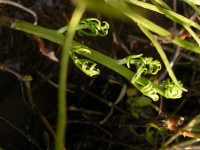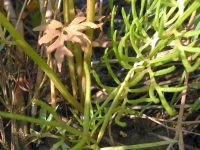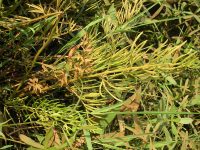|
Ceratopteris pteridoides (Hook.) Hieron., Bot. Jahrb. Syst. 34(5): 561 561 1905. (Syn: Ceratopteris lockhartii (Hook. & Grev.) Kunze; Ceratopteris parkeri (Hook.) J. Sm.; Parkeria lockhartii Hook. & Grev.; Parkeria pteridoides Hook.);
. Tropical & Subtropical America, Indian Subcontinent, Central & E. China to Vietnam: Argentina Northeast, Assam, Bangladesh, Bolivia, Brazil Northeast, Brazil Southeast, Brazil West-Central, China North-Central, China South-Central, China Southeast, Colombia, Costa Rica, Cuba, Ecuador, El Salvador, Florida, French Guiana, Guatemala, Guyana, Honduras, India, Jamaica, Louisiana, Mexico Gulf, Mexico Northwest, Mexico Southeast, Mexico Southwest, Nicaragua, Panamá, Paraguay, Peru, Suriname, Trinidad-Tobago, Venezuela, Vietnam as per POWO; .
Plants usually floating, 20–30 cm tall. Stipe, rachis, and costa of lower pinnae all obviously expanded toward base, base of stipe narrowly cuneate, covered with roots. Fronds dimorphic. Sterile fronds green, smooth; stipe semicylindrical, 5–8 cm, ca. 1.5 cm in diam.; lamina ovate-triangular, simple and deeply divided, sometimes opposite-pinnate; lobes triangular to broadly loriform. Fertile fronds green when young and brownish when old, smooth; stipe 5–8 cm, 1–3 cm in diam.; lamina broadly triangular, 15–25 cm, 2–4-pinnate; ultimate lobe linear or siliquiform, 2–6 × ca. 0.2 cm, margin thin, strongly reflexed toward main vein to cover sori, apex acuminate. Sporangia attached to veinlets on both sides of main vein, covered with reflexed margin of lobe, brown, with 0–40 annulus cells, with 32 spores inside. Spore tetrahedral, below 100 μm in diam., with few parallel ridges. 2n = 78 (diploid).
.
    strange aquatic from Hooghly 20/11/12 sk2: Found this strange looking small herb in a small pond, growing with other aquatic vegetation. Species : UNKNOWN H & H : small aquatic herb
Date : 19/11/12, 1.27 p.m.
Place : Hooghly This is Water Sprite [Ceratopteris thalicteroides]. Will send my photographs of this later. Thank you very much …, found similar picture at – Photographed on my property at Shahapur. Beautiful …, will see if i could also find some different looking basal leaves.
Yes Ceratopteris thallictroides PISTIA STRATIOTES LINN called jalakumbhi in Ayurveda I have an earlier post of Pistia stratiotes L. at https://groups.google.com/d/topic/indiantreepix/ssion. This plant in the thread looks different and i think earlier ID suggestion Ceratopteris thalicteroides is correct. It is Ceratopteris thalicteroides Namaste from cold, frosty Edinburgh! From the size and development of the frond of that Ceratopteris, I would think it much more likely (and from the locality) to be C. pteridoides rather than thalictroides. A diagnostic feature of this species, not shown in the photo, is the rather thick, succulent lower stipe full of aerenchyma, adpated for floating. Would that be so in this specimen? The two also differ cytologically and are genuinely different taxa despite being lumped together by everyone – including myself until a couple of years ago. 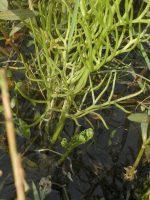 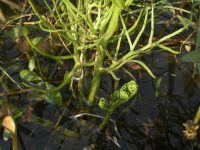 I think it is not floating type, rather it is erect. Moreover, the pictures, found in the net, of Ceratopteris pteridoides do not match. Though some are wrongly identified, i think – http://houseaqua.ru/91-vodyanaya-kapusta.html ! However, attaching two more larger images for your perusal. I would try to have a closer view of its lower stipe and update. 2 images. I think I did not write precisely enough as it lead to a misunderstanding! I was not meaning the leaves are floating on the surface of the water – such leaves, which are very wide-lobed, are not of use for identification, nor are under-water ones, when they occur. I was rather meaning the whole plant sticks up, supported above the water, or on the ground in very wet places – so, yes, erect, as you say. 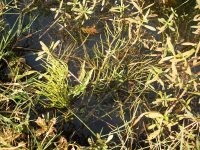 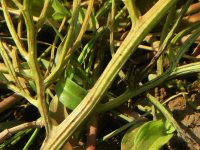 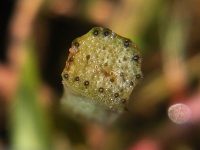 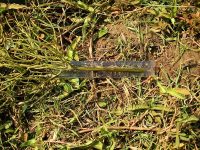 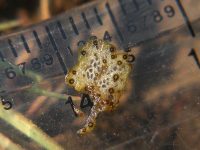 It seems to me that this species has aerenchyma, not sure if it is succulent. Recorded new photographs today, to my capacity. Thank you very much for your kind help. 5 images. I have gone through the letter of … Please find the difference of C. thalictroides and C. pteridoides.
In C. thalictroides lower sterile leaves are pinnately divided, more or less triangular in outline, broader below than above, with adventitious buds; Petiole long and narrow. Ultimate segment of the mature fertile leaves with margin revolute only whole way to the vein, covering the total lower surface.
In C. pteridoides, In C. thalictroides lower leaves are simple, sterile with adventitious buds; Petiole short and thick fleshy. Ultimate segment of the mature fertile leaves with margin revolute only part of the way to the vein, covering only the edges of the lower surface. It’s really good that you want to know about aquatic plants. Correctly … mentioned about Ceratopteris thalictroides.. It is submerged in juvenile stage and floating in mature phase. This is a fern allies.
If you are interested you can see these unique creatures of our state in “ILLUSTRATED AQUATIC AND WETLAND PLANTS IN HARMONY WITH MANKIND”. I am not sure if this is the case. Both of them can be submerged during vegetative stage. But the sporophytic part always comes out when it gets drier as a part of survival strategy of the plant. .
Ceratopteris sp.: No images seen now. Ceratopteris thallictroides That is very clearly a superb clump of Ceratopteris pteridioides. In the past they have often all been put as one species in India, “C. thalictroides“, but in fact three species and two subspecies occur there – C. thalictroides is a tetraploid species with a thinner stipe and not so huge (it is not just a matter of growth!), but C. pteridoides is commoner in the plains and has the very characteristic thick, succulent stipe so well shown in your photo. C. pteridoides is diploid (though I can’t quite see the chromosomes this time!!). Actually it isn’t really thalictroides – only in a very broad sense if one recognises only one species. But a check of Lloyd’s monograph and the fine new work by Masuyama in Japan reveals more to it than that. This particular photo is very characteristic of pteridioides. … comment has made the topic interesting. He has refered to work of Masuyama of Japan. I furnish below some of the differences between the two species pointed out by Masuyama. I think it is worth comparing the plant with the characteristics pointed out here.CERATOPTERIS Brongniart, Bull. Sci. Soc. Philom. Paris, sér. 3, 8: 186. 1821[1822 per ING].水蕨属shui jue shu Lin Youxing (林尤兴); Shigeo Masuyama Parkeria Hooker. Ferns annual, juicy, aquatic. Rhizome erect, short, with thick roots, dictyostele, with scales at apex; scales broadly ovate or cordate to peltate, entire, thin, brownish hyaline. Fronds clustered, dimorphic; stipe green, ± expanded, semicylindrical, fleshy, smooth, with sparse scales, with many longitudinal ridges on surface and many small vascular bundles inside. Sterile lamina green, ovate- to lanceolate-triangular, thinly herbaceous, simple or pinnate; ultimate lobe broadly lanceolate or loriform, entire, acute at apex; veins anastomosing; gemma occasionally formed in axil of pinnae, brownish, small, ovate, resulting in juveniles through asexual propagation. Fertile lamina similar in morphology to sterile lamina but normally taller, divided more deeply and finely; ultimate lobe reflexed toward costa to enclose sori, green when young and brownish when old, linear to siliquiform; rachis green, with longitudinal ridges, deplanate when dry. Sori attached along costa, narrowly linear, covered with reflexed margin of lobe. Sporangium large, subsessile; annulus broad, vertical, consisting of 0–70 incrassate cells; trilete mark obvious or not. Spores 16 or 32 per sporangium, large, tetrahedral, trilete, with fine, parallel ridgelike ornamentations. x = 13(39). Four to seven species: tropics and subtropics; two species in China. In China, the rhizomes and fronds are used medicinally for treating fetal toxins and phlegm buildup. The young fronds are used as a vegetable. 1a. Plants rooting in silt; sterile frond varied in form, pinnate to 3-pinnate, tall or short depending on environment; stipe 3–30 cm, ca. 1 cm in diam., base unexpanded; fertile fronds taller than sterile ones, lamina oblong or ovate-triangular ……………………………………………………… 1. C. thalictroides 1b. Plants usually floating; sterile frond simple to pinnatifid to pinnate, broadly triangular; stipe 5–8 cm, 1–3 cm in diam., base much expanded; fertile fronds not taller than sterile ones, lamina broadly triangular 2. C. pteridoides 1. Ceratopteris thalictroides (Linnaeus) Brongniart, Bull. Sci. Soc. Philom. Paris, sér. 3, 8: 186. 1821.水蕨shui jue Acrostichum thalictroides Linnaeus, Sp. Pl. 2: 1070. 1753; A. siliquosum Linnaeus; Ceratopteris siliquosa (Linnaeus) Copeland; Ellobocarpus oleraceus Kaulfuss; Furcaria thalictroides (Linnaeus) Desvaux;Pteris siliquosa (Linnaeus) P. Beauvois; P. thalictroides (Linnaeus) Swartz (1800), not Muhlenberg (1793); Teleozoma thalictroides (Linnaeus) R. Brown ex H. Richards. Plants green, 5–70 cm tall, juicy and soft. Rhizome erect, short. Fronds clustered and dimorphic. Sterile fronds: stipe green, semicylindrical, 3–30 cm, ca. 1 cm in diam. or less, fleshy, not expanded, sparsely scaly; lamina erect or floating when young, ovate to lanceolate, 6–30 × 3–15 cm, base rounded-cuneate, apex acuminate, 2–4-pinnate; pinnae 5–8 pairs, alternate; lower 1 or 2 pairs larger, ovate to oblong, up to 10(–35) × 7 cm, base subrounded to subtruncate, apex acute to acuminate, 1–3-pinnate; pinnules 2–5 pairs, alternate, stalk short and with narrow wings on both sides, blade broadly ovate or ovate-triangular, up to 4 × 3 cm, deeply divided, base rounded-truncate, apex obtuse to acuminate; ultimate lobe linear-oblong or linear-lanceolate, up to 2 × 0.5 cm, entire, base decurrent along rachis forming broad wing, apex obtuse to acute; upper pair of pinnae similar in shape to basal pair of pinnae but gradually smaller. Fertile fronds: stipe same as in sterile fronds; lamina oblong or ovate-triangular, 15–40 × 10–22 cm, base rounded-cuneate or rounded-truncate, 2- or 3-pinnate, apex acuminate; pinna 3–8 pairs, alternate, lower 1 or 2 pairs of pinnae larger, ovate or narrowly triangular, up to 14 × 6 cm, stalked; ultimate lobe linear to siliquiform, 1–4 × ca. 0.2 cm, margin thin, strongly reflexed toward costa, like false indusium, apex acuminate. Veins anastomosing. Lamina softly herbaceous, green when young and brownish when old, glabrous; rachis and costa same color as stipe, smooth. Sporangia attached to veinlets on both sides of main vein, covered with reflexed margin of lobe, brown, with 30–70 annulus cells, with 32 spores inside. Spores tetrahedral, more than 100 μm in diam., with granulate perine and thick exine forming rich parallel ridges on surface. 2n = 154, 156 (tetraploid). Ponds, ditches, rice fields, taro patches, usually rooting. Anhui, Fujian, Guangdong, Guangxi, Hainan, Hubei, Jiangsu, Jiangxi, Shandong, Sichuan, Taiwan, Yunnan, Zhejiang [India, Indonesia, Japan, Malaysia, Myanmar, Nepal, New Guinea, Philippines, Sri Lanka, Thailand, Vietnam; Africa, Australia, Central, North, and South America, Madagascar, Pacific islands, West Indies]. 2. Ceratopteris pteridoides (Hooker) Hieronymus, Bot. Jahrb. Syst. 34: 561. 1905 [“pteroides”].粗梗水蕨cu geng shui jue Parkeria pteridoides Hooker, Exot. Fl. 2: t. 147. 1825; Ceratopteris parkeria J. Smith. Plants usually floating, 20–30 cm tall. Stipe, rachis, and costa of lower pinnae all obviously expanded toward base, base of stipe narrowly cuneate, covered with roots. Fronds dimorphic. Sterile fronds green, smooth; stipe semicylindrical, 5–8 cm, ca. 1.5 cm in diam.; lamina ovate-triangular, simple and deeply divided, sometimes opposite-pinnate; lobes triangular to broadly loriform. Fertile fronds green when young and brownish when old, smooth; stipe 5–8 cm, 1–3 cm in diam.; lamina broadly triangular, 15–25 cm, 2–4-pinnate; ultimate lobe linear or siliquiform, 2–6 × ca. 0.2 cm, margin thin, strongly reflexed toward main vein to cover sori, apex acuminate. Sporangia attached to veinlets on both sides of main vein, covered with reflexed margin of lobe, brown, with 0–40 annulus cells, with 32 spores inside. Spore tetrahedral, below 100 μm in diam., with few parallel ridges. 2n = 78 (diploid). Marshes, ponds, ditches, usually floating on water. Anhui, Hubei, Jiangsu, Jiangxi, Shandong [Bangladesh, India, Vietnam; Central, North, and South America]
. References:
POWO |
Disclaimer
1. For any mistake in identification or for becoming efloraofindia e-group member (for contributing towards building of efloraofindia or otherwise), pl. mail to indiantreepix@googlegroups.com or itpmods@googlegroups.com
2. For better viewing of species’ pages, colour scheme & formatting is being followed as: Description of the species, Details of other flora species on the same page, Uses/ harms, Distribution, Abundance/ Location/ Flowering time & date, Habit & habitat, Etymology & pronunciation, Other interesting information, stories etc., Others, Botanical names, Common names, Main point of discussion below, Discussion about Botanical names.
Navigation
- Award for eFloraofIndia
- Colour scheme & formatting
- Copyrights, Permissions, Citations
- eFloraofIndia appreciated
- Names of Plants in India site
- Flowersofindia site
- Posting Guidelines
- For members’ information
- Logo, Tagline, Acronym
- Volunteers required
- ‘Pitamah’ of eFloraofIndia
- ‘अजेय’ ‘Ajey’ of eFloraofIndia
- ‘Saarthi’ ‘सारथि’ of eFloraofIndia
- ‘Jewel’ of eFloraofIndia
- ‘Grassman’ of eFloraofIndia


